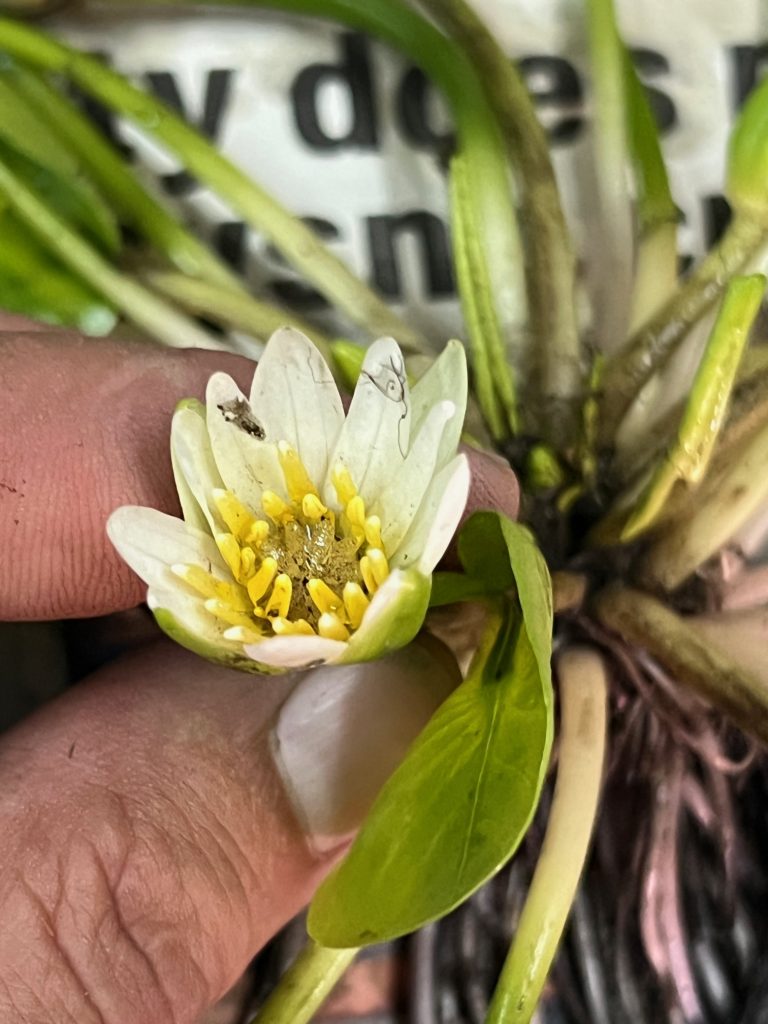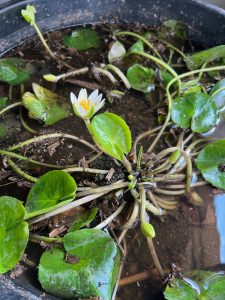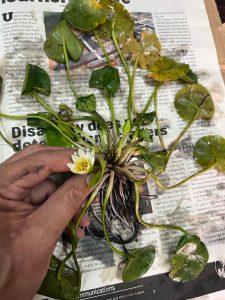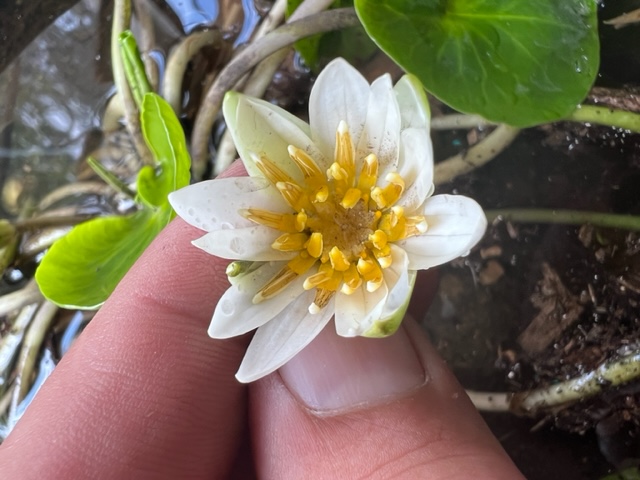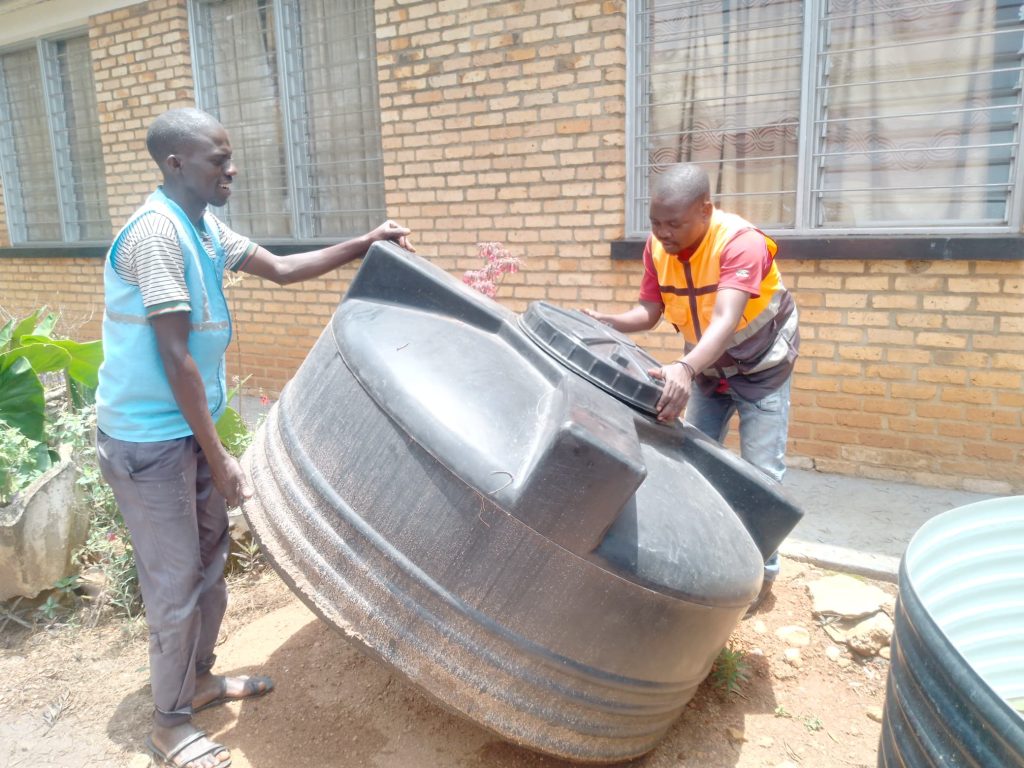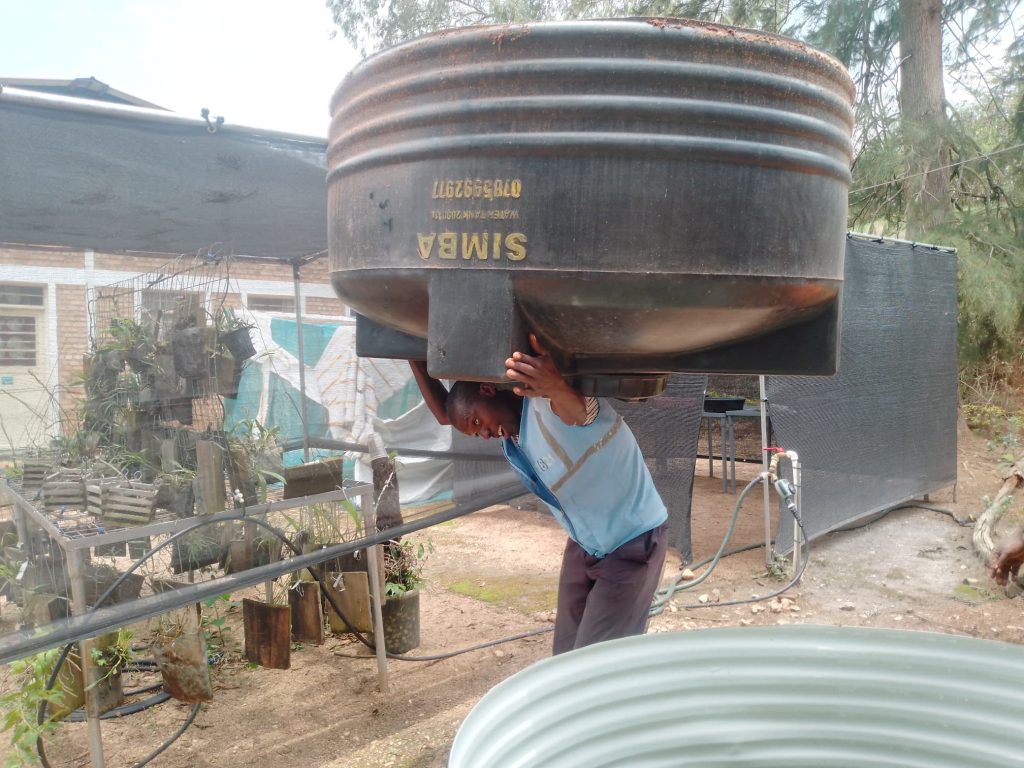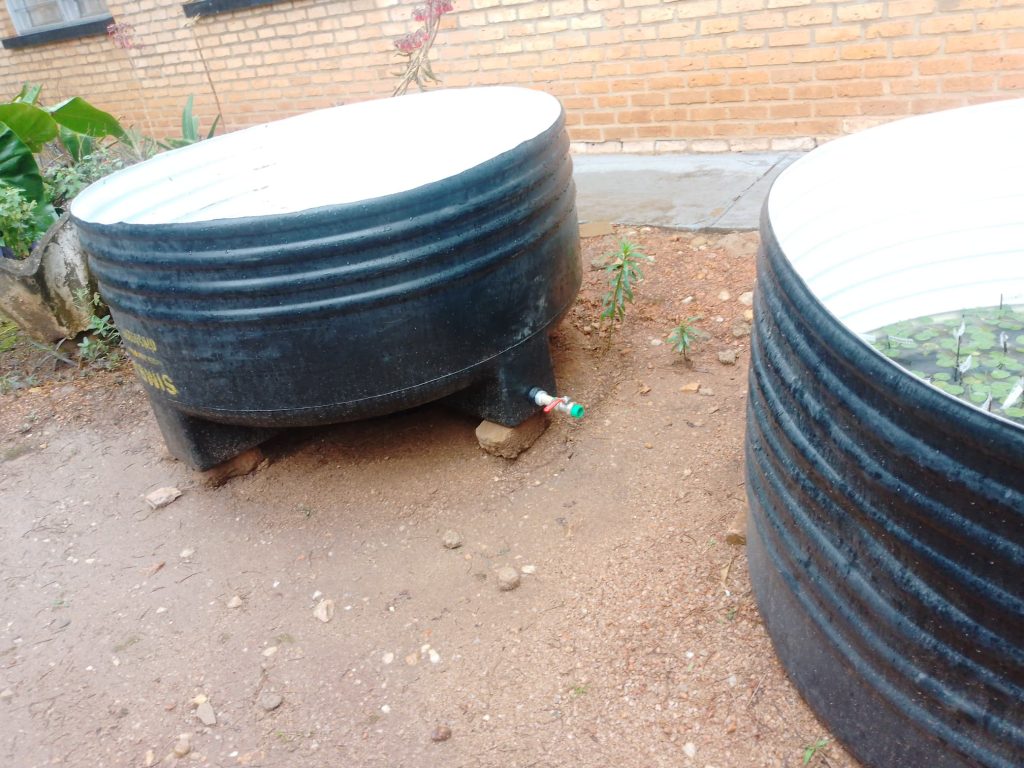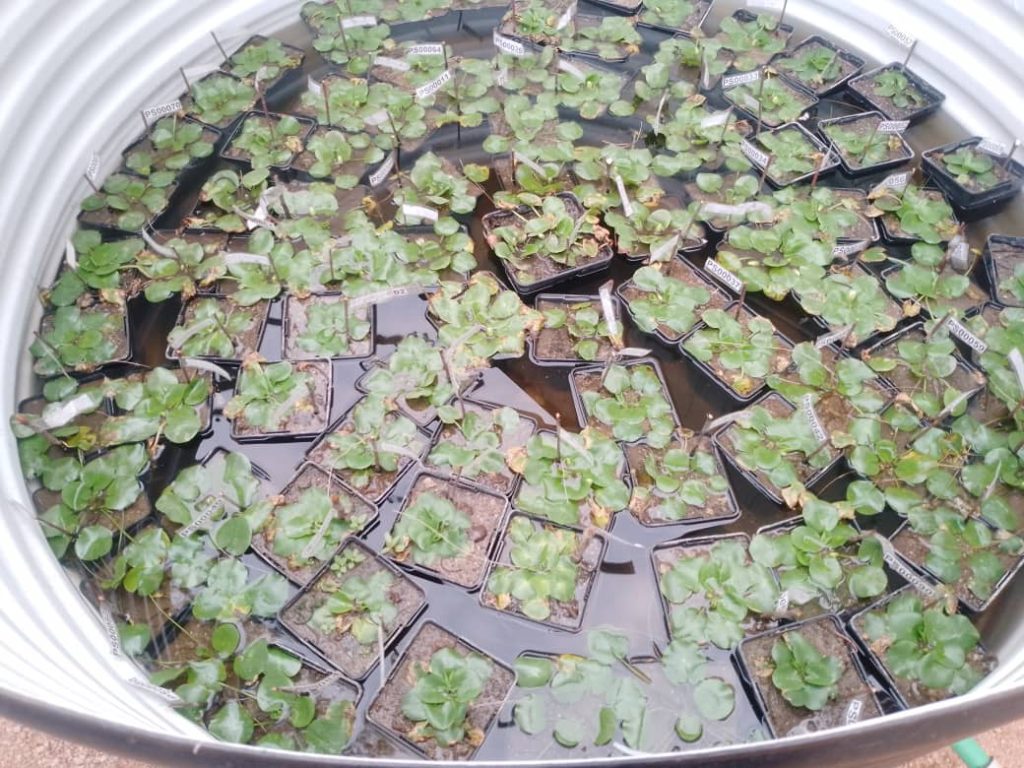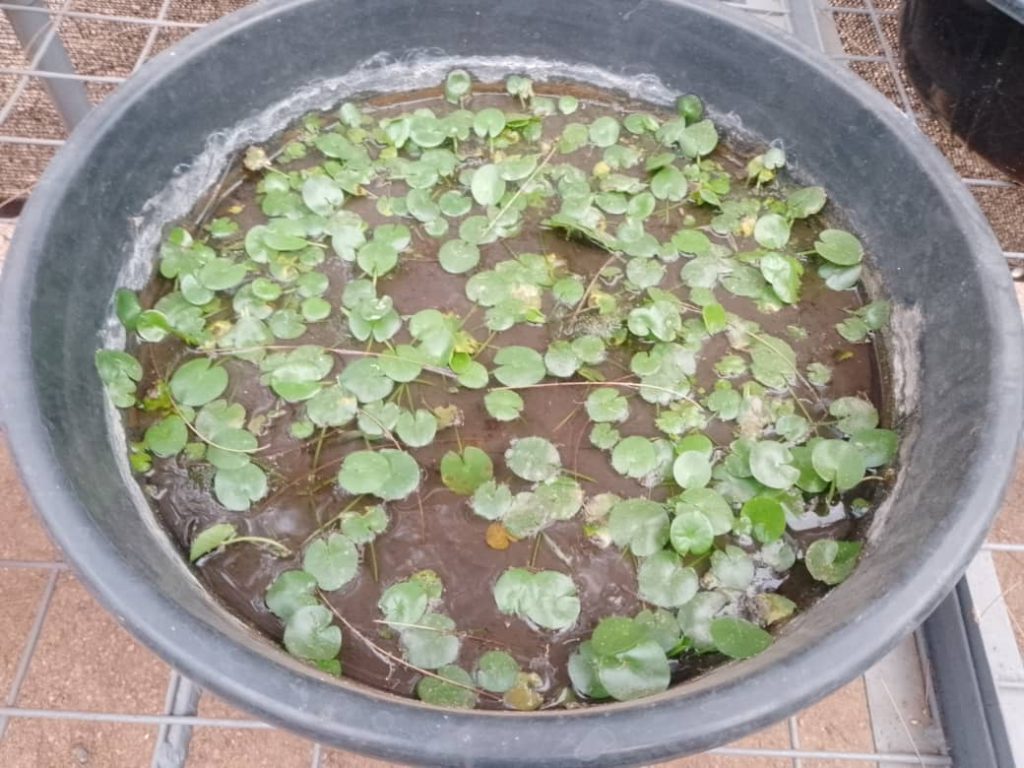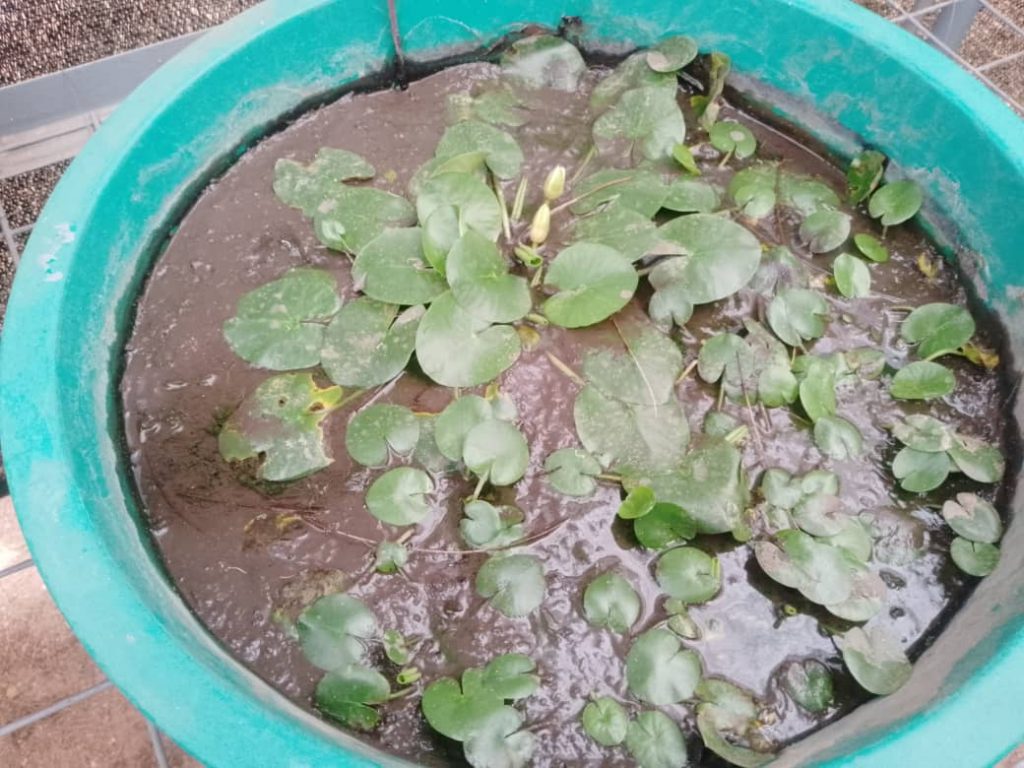Principal Investigators: Dr. Michael Thomas and Pascal Sibomana, University of Rwanda
Collaborator: Lara Yara, Erasmus University, The Netherlands
Partners: Royal Rotterdam Zoological & Botanical Gardens, The Netherlands;
Erasmus University, The Netherlands;
Arnold Arboretum at Harvard University-USA
IUCN Red List of Threatened Species
Deliverables
Poster presented at the ATBC meeting in July 2024.
Conservation of Nymphaea thermarum Eb.Fisch. (Nymphaeaceae), the Rwandan miniature waterlily
Scientists seek to save endangered plant species in Rwandan hot spring.
New Times article – July 03, 2024
Published peer-review article
Celebrating an “Extinct in the Wild” Waterlily Rescue in Rwanda.
Poster presented at the ICCB meeting in July 2023.
A Species Recovery Plan for the Extirpated Rwandan Waterlily (Nymphaea thermarum).
—————————————————
International team of botanists rediscover extinct Water Lily in Rwanda
Botanists surveying a remote wetland have rediscovered the world’s smallest water lily believed to have previously been extinct in Rwanda.
Kigali, 25 August 2023 – An international team of botanists from the National Herbarium of Rwanda, a unit of the Center of Excellence in Biodiversity and Natural Resource Management at the University of Rwanda, rediscovered a significant population of the species during a research expedition near the amashyuza (hot spring) in the Western Province. The team was aided by Congolese botanist Bonny Dumbo who shared his excitement at the “amazing find”, as he had previously searched exhaustively for the species. Read full Press Release…
———————-
Background
Nymphaea thermarum was first identified in 1987 (Fischer and Magdalena, 2010) from a vegetation survey in the Mashyusha hot spring. It soon became apparent that a new endemic species of Nympaea had been collected, which was subsequently described in 1988. After some comparison, it was determined that this was the smallest of all known water lilies. Seed of the species was brought to Germany and later successfully cultivated in the greenhouses of the Botanical Garden at Mainz University.
Between 1988 and 2005, the increased use of the spring resulted in changes to both its habitat and the water flow. This resulted in a decrease in the population of the water lily. A survey in 2009, identified the original collection site had become altered by human landscape changes and consequently the species was no longer present at the original site. It was declared extirpated in 2010 and the IUCN Red-list assessment is Extinct in the Wild (EW).
Since 2010, it has been widely cultivated in botanical gardens including Mainz, Bonn, Harvard University, Missouri Botanical Garden and Royal Botanic Gardens at Kew. Although, several botanic gardens have stated their interest in a recovery project for more than a decade, no foreign institution has moved forward with a project. Hence, an initiative was launched to lead such an effort through the existing resources at the University of Rwanda.
Through the funding of our partners we have launched the following research activities:
1) Baseline survey to acquire field data for authoring a paper detailing the rediscovery
2) Update the IUCN Red List status from Extinct in the Wild to Critically Endangered
– assessing the status of ex-situ conservation in Botanical gardens around the globe that are known to have the species
3) Species recovery plan development
4) Collaborating with the Rotterdam Zoological & Botanical Gardens to student counterparts work collaboratively to
build capacity and share knowledge and resources regarding germination and flowering protocols
5) Initate a seed storage trial
6) Horticultural trials potentially at the Rwasave Fishing Pond, Huye5
